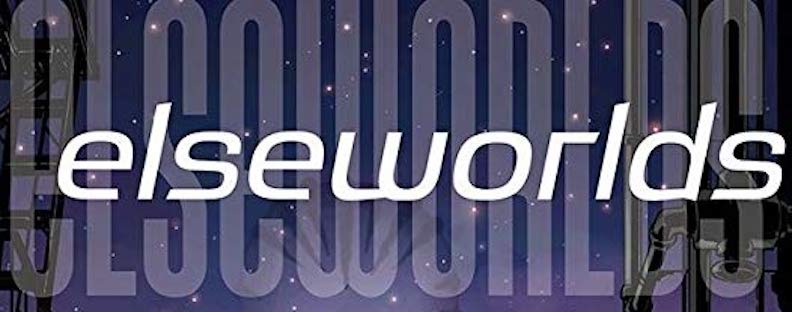As if combining three shows into a major crossover wasn’t enough, the ARROWVERSE crossover ELSEWORLDS is introducing a slew of new characters into the mix in these three episodes, and many of them are established characters within the DC Comics universe.
Most of them are iconic characters important to the company’s history, altered slightly for a TV twist.
AMAZO
First Appearance: Brave and the Bold 3 (1960)
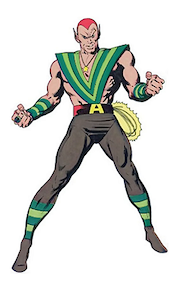
Created by Gardiner Fox and Murphy Anderson in 1960, AMAZO is an android that was created by Professor Ivo as a means to collect information that could extend his lifespan. The android manages to replicate the powers of the heroes he encounters, which makes him a tough opponent when he faces the totality of the Justice League. Thankfully, he can only use one of the powers at a time, giving heroes an edge when trying to take him down.
AMAZO has been adapted several times over the years, with various iterations giving him more advanced versions of his powers. In one of my favorite battles, in JLA 27 from 1999, AMAZO takes on the League, which sends more and more heroes against the android, which gains more and more power. The beating continues until Superman announces that he’s disbanded the JLA, which negates all of AMAZO’s powers and the android deactivates.
Doctor Destiny
First Appearance: Justice League of America 5 (1961)
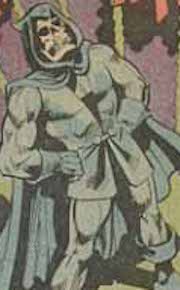
Another Gardiner Fox creation, this time with artist Mike Sekowski, Doctor Destiny is probably better-known for his appearance in an issue of Neil Gaiman’s THE SANDMAN series, where he affected the customers of a small-town diner and forced them to do his bidding in a horrific 24-hour span. But that appearance came more than 2 decades after his creation.
Until that turn, John Dee was a criminal scientist who used fantastic creations to confound his opponents. It wasn’t until he created a “materioptikon,” a device that allowed him to pull new realities from dreams, that he came upon a gimmick that made him stand out. He’s been a persistent foe for the Justice League, frequently causing them extensive problems before the heroes managed to take him down.
The most recent version of Doctor Destiny, in the NEW 52, was renamed John Deegan (like the character appearing in the ELSEWORLDS crossover) and was reimagined as a student of magic way back in the 1500s who had used his powers to keep him alive through the present day.
The Monitor
First Appearance: The New Teen Titans 21 (1982) / GI Combat 274 (1985)
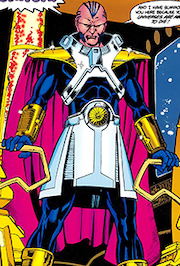
Now here’s a character I never expected to see in a live-action TV series. Initially created by Marv Wolfman and George Perez as a company-wide villain, the Monitor became the lynchpin of the CRISIS ON INFINITE EARTHS event in 1985, gathering all the heroes to battle his mirror image, the Anti-Monitor, who aimed to destroy all positive matter within his reach. The Monitor died during the Crisis, killed by the orphan girl he had raised to carry on his mission.
During the company-wide INFINITE CRISIS in 2005, The Monitor became the Monitors when the multiverse was re-established, and the race of beings became a focal point of the DC Universe during Grant Morrison’s FINAL CRISIS event in 2008. The crossover introduced the concept of the Overmonitor, “which was an incorporeal and unfathomable being of limitless imagination who became aware of the concept of stories by stumbling upon the original Multiverse” (thanks, Wikipedia). The Monitors eventually became a race of cosmic vampires, so a Monitor showing up in a multiversal crossover is usually not a good thing.
Lois Lane
First Appearance: Action Comics 1 (1938)
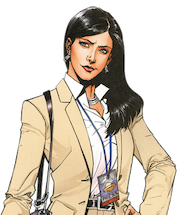
No stranger to any form of adaptation, Lois Lane has been around for the entirety of the superhero lifespan, showing up alongside fellow Siegel and Shuster creation Superman in his first appearance. Lois Lane has been the prototype for most of the female love interests in comic books. While Lois spent the better part of the Silver Age of comic books trying to trick Superman into marrying her, like she was perpetually stuck in an episode of I LOVE LUCY, she adapted into the modern age as a strong, independent woman who relied on Clark Kent/Superman as a partner and not as someone to rescue her (though she does tend to take some unnecessary risks because she knows that if something goes wrong, the guy in the red cape will move heaven and earth to save her).
Lois Lane is an award winning reporter and author, and is, when she is written best, one of the strongest non-powered female characters in all of comics. Given her intrepid spirit and the soul of a journalist wanting nothing more than to reveal the truth to a worldwide audience, she’s really the only person in the multiverse who could keep up with someone like Superman.
Batwoman
First Appearance: 52 No. 11 (2006)
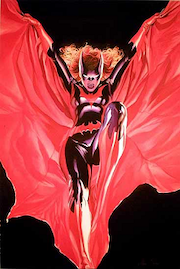
Kate Kane is an interesting modern age update of a relatively useless Silver Age character. Batwoman (then with the alter-ego of Kathy Kane) was introduced in the 1950s to counteract Dr. Frederic Wertham’s claims that Batman and Robin were gay during Wetham’s crusade to have everyone think comics were a perversion. In the 1960s, Batwoman and Kane gave way to Barbara Gordon’s Batgirl. Kane was eventually killed by the Bronze Tiger in 1979 and for a few decades, she stayed dead.
Then came 52, the weekly comic book DC Comics did from writers Geoff Johns, Grant Morrison, Greg Rucka, Mark Waid and Keith Giffen. With Batman missing in the year after INFINITE CRISIS, Bruce Wayne’s cousin, Kate Kane, put on a cowl and became Batwoman. The new hero operated independently of Batman while still being one of the few ties to biological family Bruce Wayne has. She was also immediately one of the most high-profile LGBTQ characters in the DC Comics library.
Nora Fries
First Appearance: Batman The Animated Series “Heart of Ice” (1992)
The wife of noted scientist and Batman villain Victor Fries, Nora Fries is generally portrayed as a woman who was cryogenically frozen by her husband because of her terminal illness. All of the things that Mr. Freeze does in his criminal life is generally meant to get the money to find a cure for his wife’s illness.
Psycho-Pirate
First Appearance: Showcase 56 (1965)
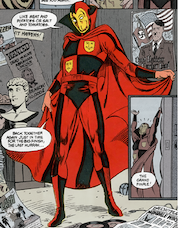
One of the criminals seen trying to escape from Arkham Asylum in part II of the Elseworlds was the man with the golden mask, which DC Comics fans would recognize as the mask used by Roger Hayden, the Psycho-Pirate. Originally from Earth-2 in the comics, Hayden got the persona from the original Psycho Pirate, Charles Halstead, and uses the mask to project emotions onto other people.
During 1985’s CRISIS ON INFINITE EARTHS, The Monitor recruited Hayden, who is eventually taken by the Anti-Monitor to manipulate the emotions of three alternate Earths. Psycho-Pirate is one of the few people who remembered what happened before and during the Crisis, and he’s shown in a straightjacket as the series ended, as no one believed his insistence that the world has changed.
